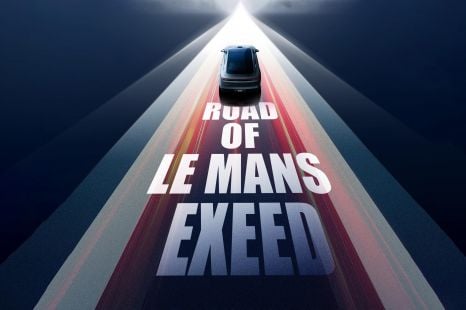

Andrew Maclean
Chery confirms plans to enter Le Mans
3 Hours Ago
Guest User
My dashboardBoth models are expensive luxury SUVs from a prestigious British brand. So what changes put the ‘Sport’ in Range Rover Sport?

Contributor


Contributor
Land Rover is currently in the process of overhauling its upper-end SUV lineup, with all-new versions of both the Range Rover and Range Rover Sport revealed, as well as an extended-length, eight-seat version of the new Defender, known as the Defender 130.
While the Range Rover has a long history that stretches back all the way to 1970, and can arguably be credited with inventing the luxury SUV segment, the Range Rover Sport is a much newer model line.
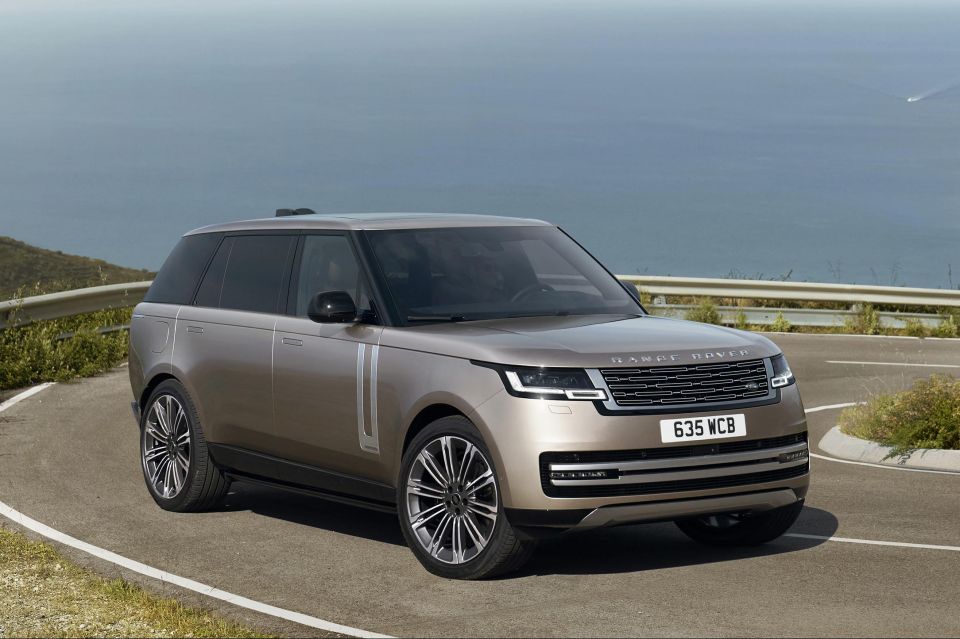
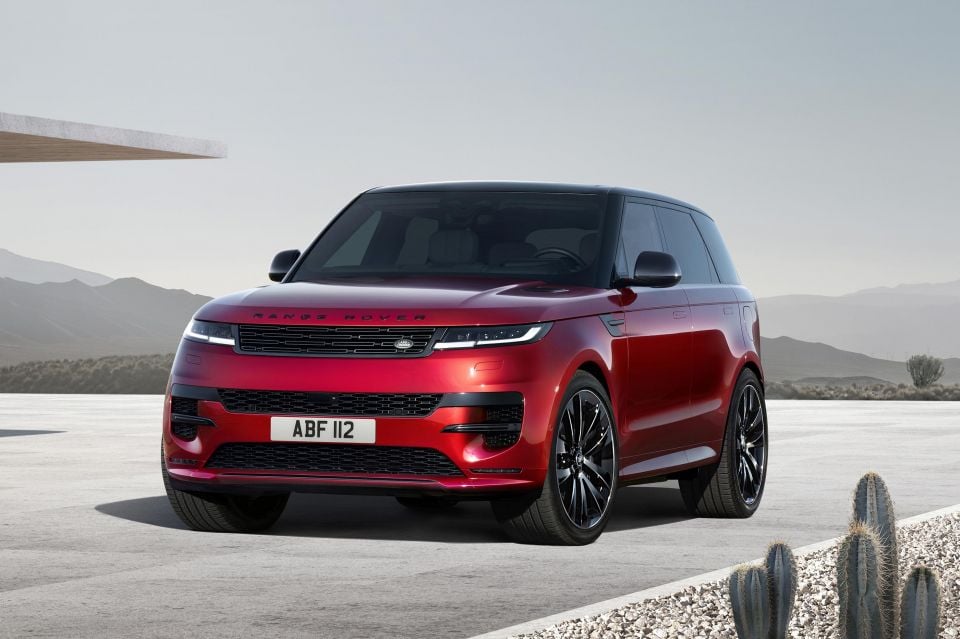
With the first iteration landing in Australia towards the end of 2005, the Sport sits below the full-size Range Rover as a direct competitor to the likes of the BMW X5, Mercedes-Benz GLE and Porsche Cayenne. Correspondingly, the latest iteration of the Range Rover Sport is only the third generation of this nameplate.
Although price is a key separator between the two products, Land Rover has successfully established the Range Rover Sport as more than a cheaper, smaller understudy to its flagship model that, true to its name, offers a high level of performance and a more dynamic character.
Apart from the underlying engineering effort to imbue the Sport with a more performance-oriented focus, one of the reasons why it can stand on its own two feet is due to a differentiated design.
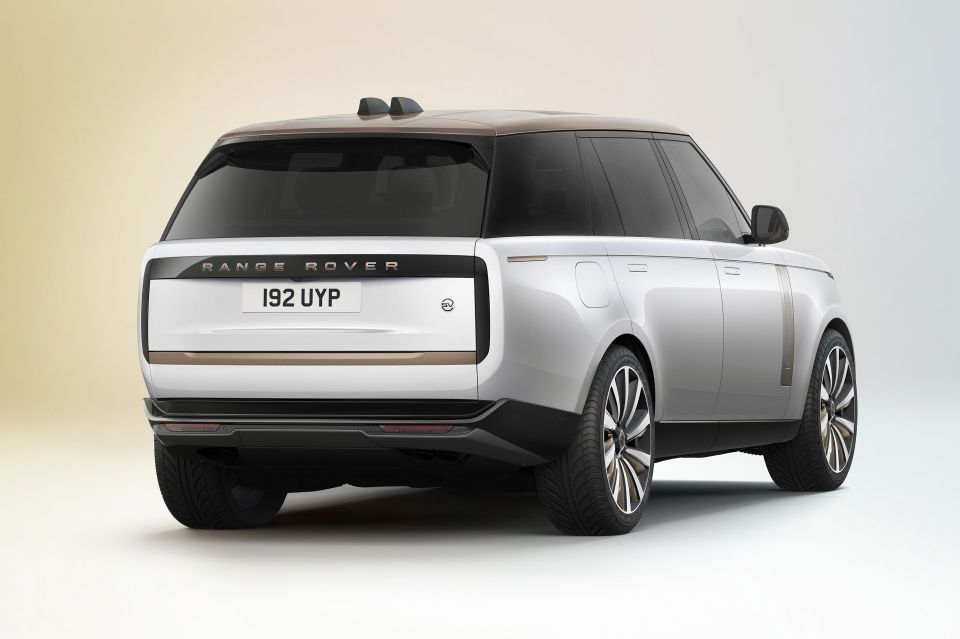
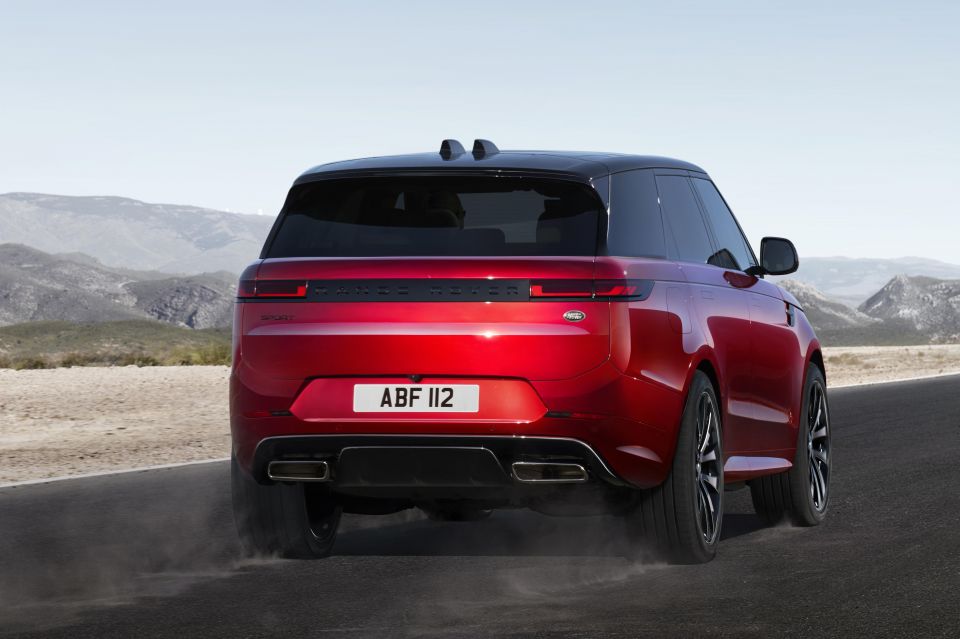
The latest generation of the Range Rover and Range Rover Sport both embrace a modernist design philosophy, with a focus on smooth surfacing, reducing or hiding the number of shut lines to the bare minimum, and an absence of otherwise frivolous character lines and gingerbread. All this enables the taut proportions of both cars to be brought into focus.
Indeed, Land Rover exterior designer Massimo Frascella claims the flagship car ‘delivers a sublime design statement that takes modernity and sophistication to the next level. Everything is so pure and free from any superfluous ornament’. This is perhaps equally applicable to its smaller sibling as well.
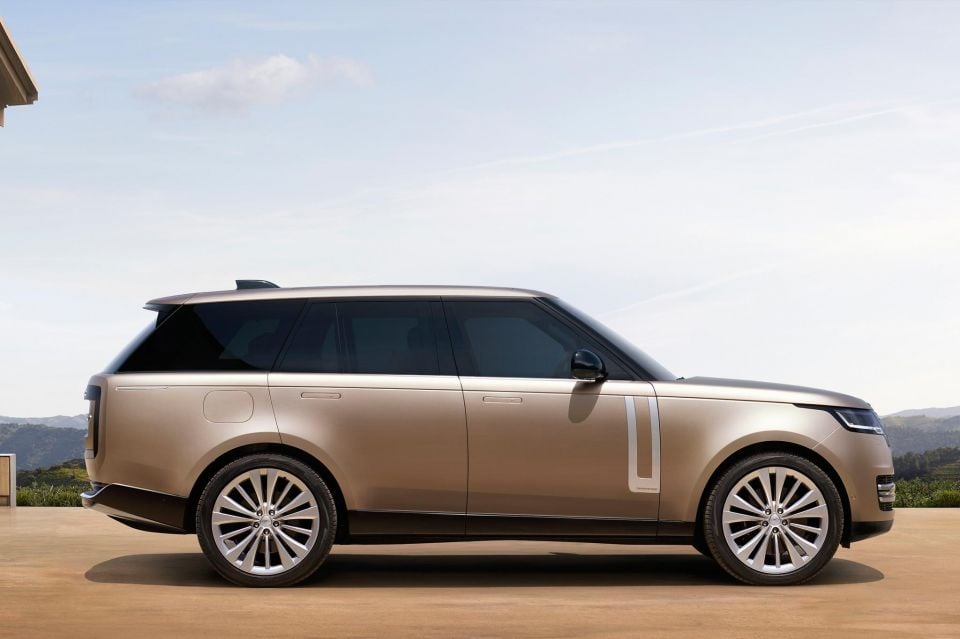
The most significant differences between the two models can perhaps be seen in the differing treatments of the side profiles. The silhouette of every Range Rover model can be defined through only three lines, namely a falling roofline, a clear, horizontally oriented waistline (sitting just below the glasshouse), and a rising third line just below the lower door sills.
Subtle differences in the angles and relationships of these lines to each other are key to how Land Rover differentiates Range Rover models in the lineup.
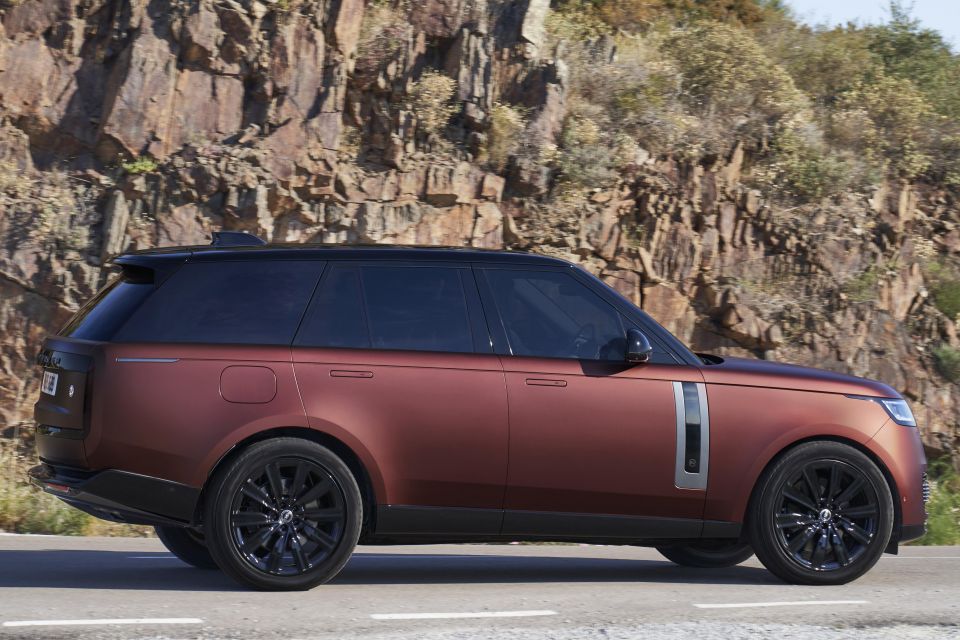
In the full-sized Range Rover, the roofline and waistline have a far shallower angle as the eye travels from the front to the rear of the car, to the extent that they run almost parallel to each other. This creates an upright, stately impression that is confirmed by the subtle door sill line, which has a gentle upwards curve as it extends beyond the rear wheel.
The vertical side graphic accentuates this further. Now integrated with the rest of the body, it draws the eye upwards and highlights the otherwise unadorned, smooth surfacing of the doors. The angles of these lines, together with the flush door handles and contrast side graphic, create an impression that the vehicle is machined from a single, solid piece of metal.
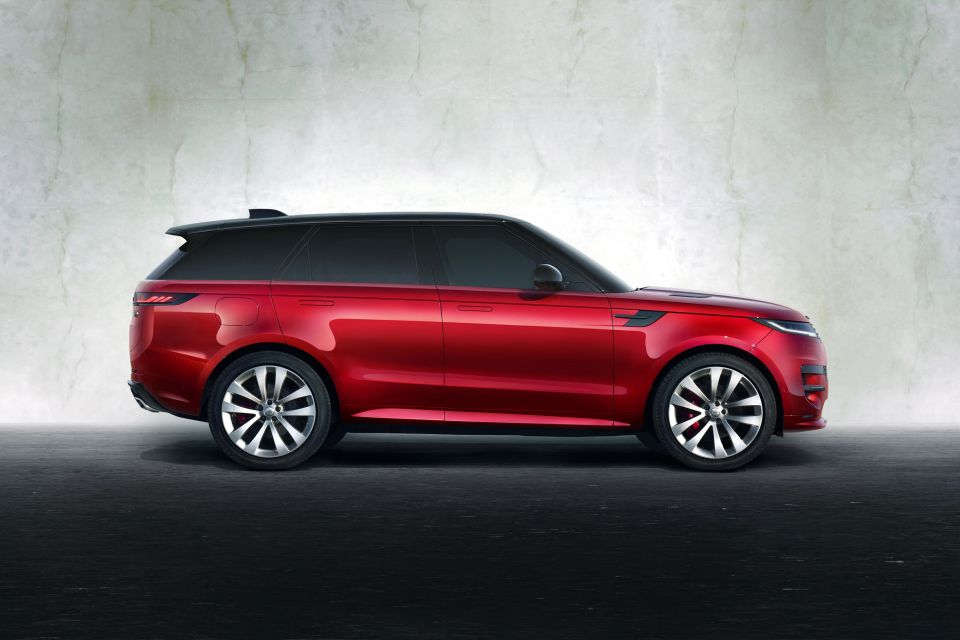
The Range Rover Sport presents a slightly different spin on the same fundamentals. The waistline slants upwards while the roofline has a more severe taper, to the extent that, if extended out, these lines would meet at a point behind the car. This has the effect of dramatically narrowing the glasshouse towards the rear of the car, which together with the extended rear spoiler, creates an almost sailboat-like impression that the car is about to leap forwards.
The lower door sill presents itself in a far more chiselled fashion than its more expensive counterpart, with a far sharper sill line that has a steeper upwards kick towards the rear.
Unlike the vertical graphic on its more luxurious counterpart, the Sport also marks a subtle nod to traditional sports cars and GT coupés with a horizontally oriented contrast piece that appears to mimic a side strake. Together, these features allude to the power and performance potential contained within the Sport.
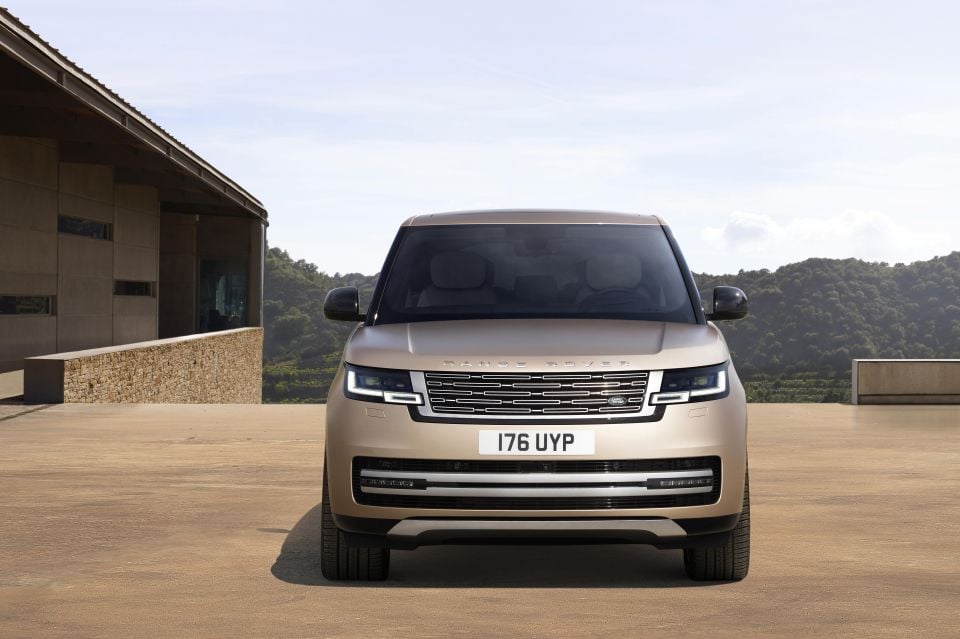
Likewise, the front profiles of both cars carry through philosophical differences evident in the side profiles described above. The flagship Range Rover has a seamless, modernist design approach where only what is necessary is present.
Typical of a luxury car, the upper grille and grille mesh is finished as standard in a satin chrome (blacked out versions are optionally available), while even the lower air intake is largely closed off, being bisected by twin satin chrome bars that also encapsulate the fog lamps.
In comparison, the Range Rover Sport presents a significantly more aggressive front-end, without departing from the same fundamental modernist design principles. Unlike the flagship, but common in many sporting models, the lower grille dominates the front-end in the Sport.
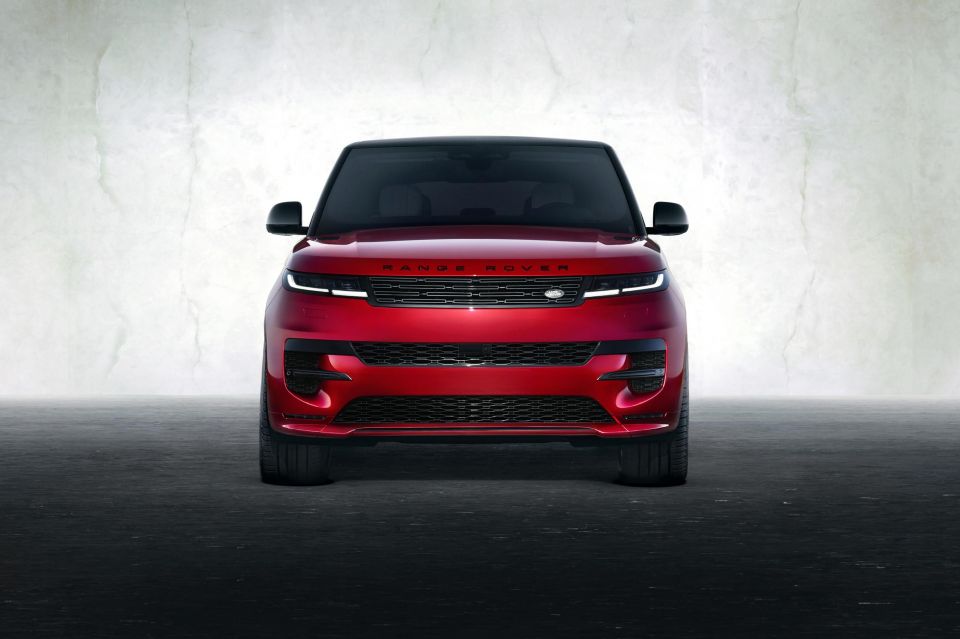
This area is composed of distinct side air intakes, as well as large openings above and below the bumper to provide further visual cues to the power lurking within the engine bay. Compared to the flagship, the upper front grille is compressed but widened, with the headlights featuring streamlined L-shaped graphics to highlight the width of the car.
Similarly to the more aggressive take on the lower front grille, the bonnet of the Sport is also more sculptural, with a distinct power dome and contrast black embellishments that deviate slightly from the flagship’s more purist design approach.
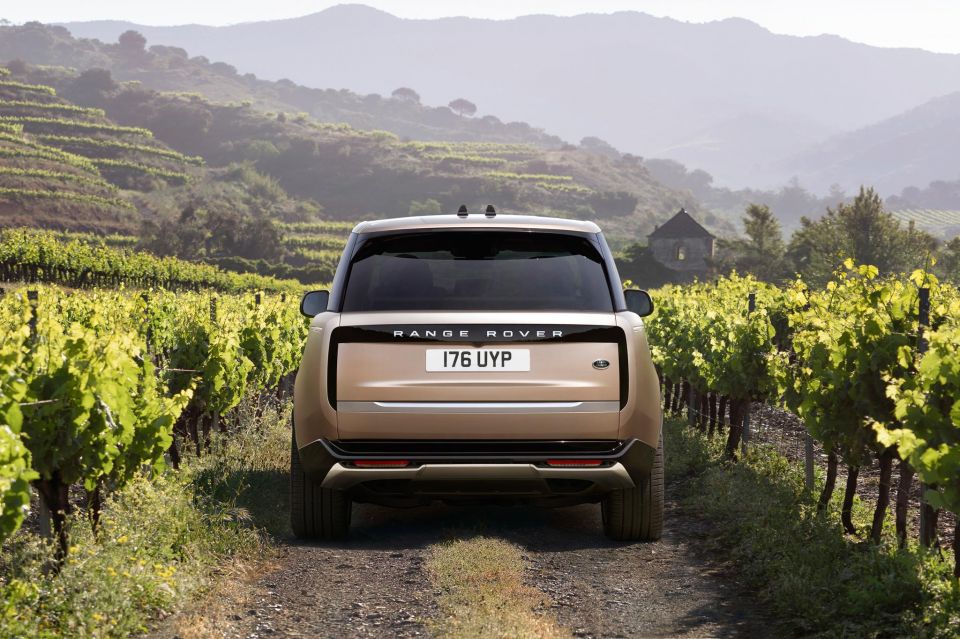
Arguably the greatest difference in design approach between the two models is visible at the tail of the car. The Range Rover makes a departure not just from its sibling models, but also its predecessors, in featuring slim but distinctive hidden-until-lit taillamps.
The vertical orientation of these not only neatly frames the split tailgate with a minimum of shut lines, thereby creating a clean design, but also draws the eye upwards towards the narrower boat-tail glasshouse. Hidden tailpipes and an absence of other character lines complete the modernist look.
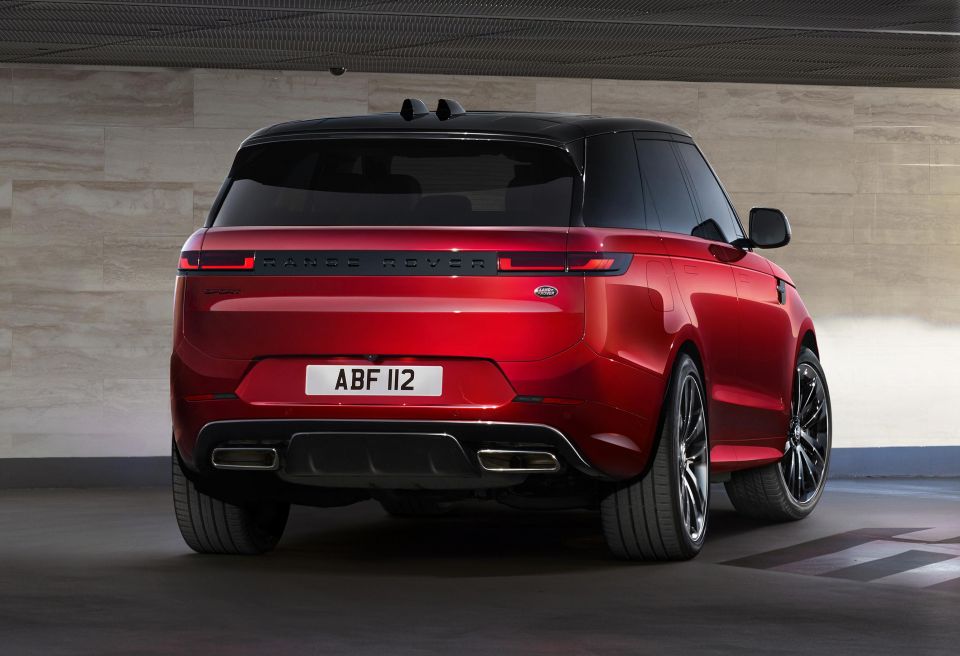
The Sport, in contrast, adopts a more conventional design that integrates visible LED tail lights within a black strip spanning the width of the tailgate. The edges of these wrap around into the side profile, aligning with the pseudo-side strake towards the front of the car, and optically widening the vehicle’s stance.
To further hint at the Sport’s performance, the tail is completed with a set of visible exhaust pipes and rear diffuser.



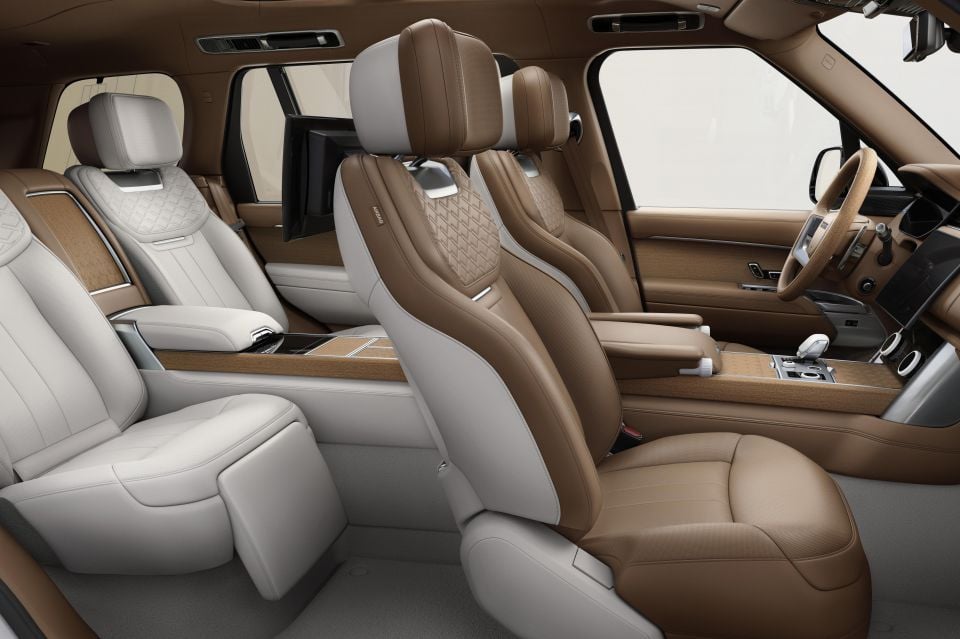
While the flagship Range Rover is available in an exclusive SV variant, complete with an ultra-luxurious second row featuring two seats and a variety of amenities including a motorised, fold-out picnic table, up front the interiors share a similar dashboard design. The modernist, reductive approach to the exterior in both vehicles carries through to the interior.
This is demonstrated by the slimline air vents, seamlessly integrated into one strip running across the top of the horizontally oriented dashboard, as well as the consolidation of most controls within the large 13.1-inch curved glass central infotainment display, running Jaguar Land Rover’s latest Pivi Pro operating system.
Unlike the Range Rover Sport, which is exclusively a five-seater, the flagship model is further differentiated by the choice of offering four, five or seven seats in the Long Wheelbase version.
MORE: Everything Range Rover MORE: Everything Range Rover Sport
Where expert car reviews meet expert car buying – CarExpert gives you trusted advice, personalised service and real savings on your next new car.


Andrew Maclean
3 Hours Ago


Max Davies
4 Hours Ago


Max Davies
4 Hours Ago
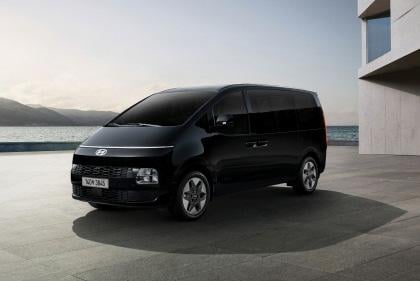

Damion Smy
6 Hours Ago
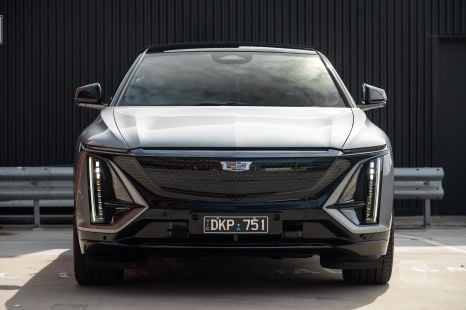

William Stopford
9 Hours Ago


Ben Zachariah
10 Hours Ago